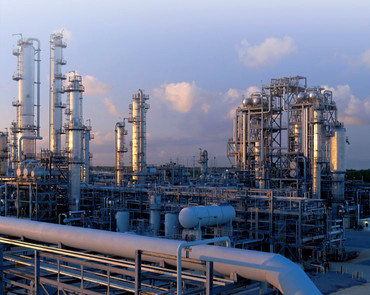| By Leslie Kaufman and Lauren Rosenthal If you live in California, you're always bracing for the Big One. This week it arrived in the form of uncontrollable flames. Liability experts equipped with climate models had been uneasily eyeing such a scenario, realizing in recent years that wildfire now had similar system-crashing potential as a major earthquake to upend lives and destabilize California's $10 trillion residential property market. A group convened to examine worst-case scenarios determined that three specific areas in the state were particularly vulnerable and capable of causing far-reaching fallout. One was Pacific Palisades, the Los Angeles neighborhood reduced to ashes this week by one of at least five fires burning across the city. "Pacific Palisades really jumps out, even in the context of high-risk areas in California," said Michael Wara, a senior research and wildfire expert at Stanford University. He was a member of the expert group five years ago working to envision nightmare liabilities for state utility companies. "It's like the bullseye in terms of one of the locations where the insurance industry can lose the most money in 24 hours."  A burned beachfront property following the Palisades Fire in Malibu, California on Friday. Photographer: Michael Nigro/Bloomberg Risk models identified the Palisades — along with Silicon Valley's Los Altos Hills and the Moraga and Orinda area east of San Francisco — because of problematic commonalities: the highest value homes, difficult topography for fighting blazes, and increased susceptibility to the kind of windy, dry weather conducive to fires. The worst-case scenario is here. As of Friday morning, more than 5,000 buildings had been damaged or destroyed by the Palisades Fire, and another four major fires continue to burn across the city with more than 57,000 structures in severe danger and more than 150,000 people under evacuation. Late Thursday, JPMorgan Chase & Co. estimated the insured damages covered could top $20 billion in what's almost certain to become the costliest wildfire in US history. As the fires continue largely unchecked, it's left many wondering if this event will permanently alter the relationship between climate risk and homes in one of the world's most valuable property markets. "Could a single event cause insurers to become insolvent? That's the great fear," said University of California, Los Angeles climatologist Daniel Swain, an authority on why California seems to be perpetually burning down. "I hope we don't get there." It's the worst fire that 78-year-old Steve Kalb, a retired entertainment lawyer, has seen in more than four decades spent in Pacific Palisades. On Tuesday, as the first of the fires ignited, he evacuated with his computer, his prescriptions, and two pairs of underwear. A neighbor bicycled by his house the next day and sent a video: everything was gone. "It was just sort of incomprehensible, total devastation," Kalb said. "Our house was flat. There was nothing there. We had steel shingles on our roof. It looks like they melted."  Police and firefighters stand outside the charred remains of a restaurant on a corner of Sunset Boulevard following the Palisades Fire on Friday. Photographer: Michael Nigro/Bloomberg It will take weeks to know the full extent of damages from fires that haven't yet subsided. But already the Los Angeles wildfires threaten to push the fragile California insurance market closer to the brink. Seven out of the 12 biggest home insurers have limited their coverage in the state over the past two years; increased fire risk driven by climate change is part of the reason. California Insurance Commissioner Ricardo Lara is intensely aware of the problem and last month issued back-to-back regulations meant to make it easier for insurers to make money in the state. The first allows insurers to use catastrophe models informed by rising temperatures and worsening droughts when setting rates, instead of relying solely on historical data. The second reform allows reinsurance costs to be passed down to customers in their premiums. "This sustainable insurance strategy is built for events like this," said Michael Soller, deputy commissioner of the Department of Insurance. "It is intended to stabilize the insurance market for the long term." But only the first policy has been fully implemented. Any impact in steadying the insurers may come too late in the face of huge new liabilities, which could push private companies further towards the exit. For some it has raised the prospect of a housing crash. "These disasters will make insurers even more cautious about insuring homes and businesses in at-risk communities. That is how the cascading failures begin: uninsurable property is unmortgageable, and unmortgageable property loses much of its value as the pool of available buyers shrinks away," said US Senator Sheldon Whitehouse, a Democrat from Rhode Island and something of a Congressional Cassandra on climate change and housing. "As we saw with the 2008 financial crisis, a crash in property values quickly becomes an economy-wide meltdown." The escalating exodus of private insurers has left the state-backed insurer of last resort, the California FAIR Plan, in a precarious position. In fact, even as State Farm, California's biggest insurer, cut nearly 70% of its policies in a ZIP code central to Pacific Palisades last year, FAIR grew by 85 % in that same area. Now FAIR could be on the hook for billions. Last September, it estimated its own exposure in the larger Pacific Palisades area at nearly $6 billion. However, according to its most recent public accounting in the spring of last year, it has only $200 million in surplus cash reserves and $2.5 billion in reinsurance (that is insurance that insurers get to cover for worst case scenarios) to cover that amount. Patrick Dorsey, a spokesman for FAIR, declined to confirm numbers but said the plan "has reinsurance and that the amount changes each year based on availability and pricing of reinsurance products." Read the full story on Bloomberg.com. For weather insights sent straight to your inbox, subscribe to the Weather Watch newsletter. | 







No comments:
Post a Comment